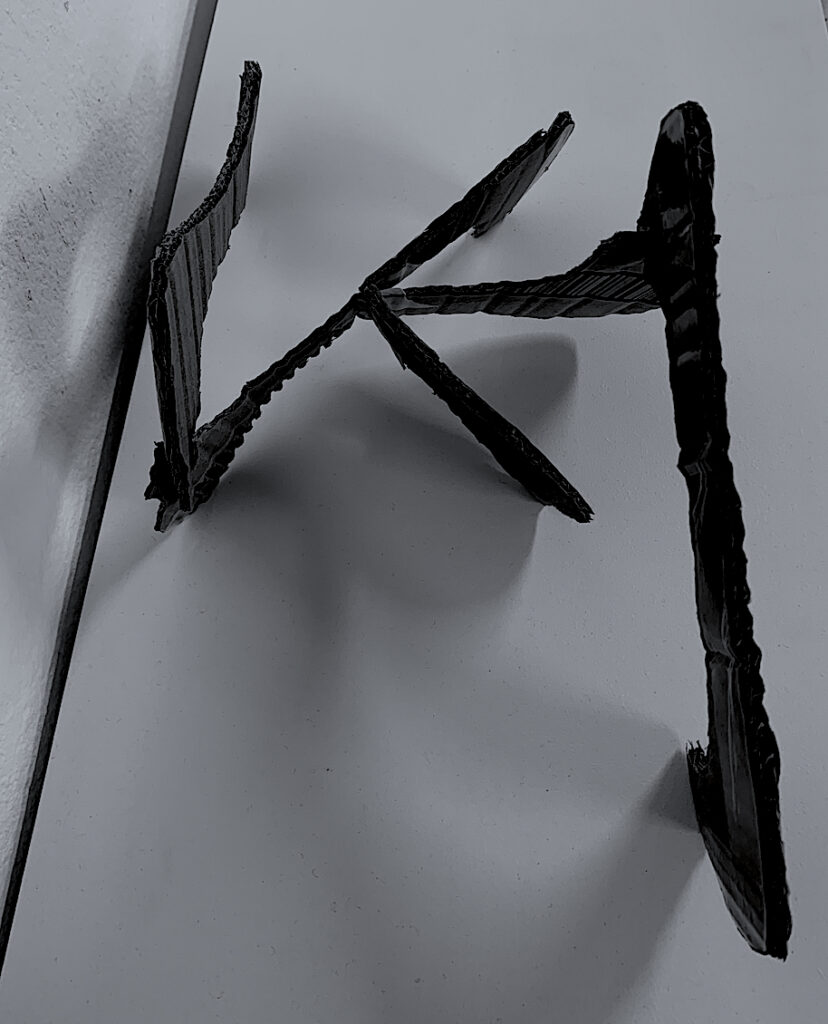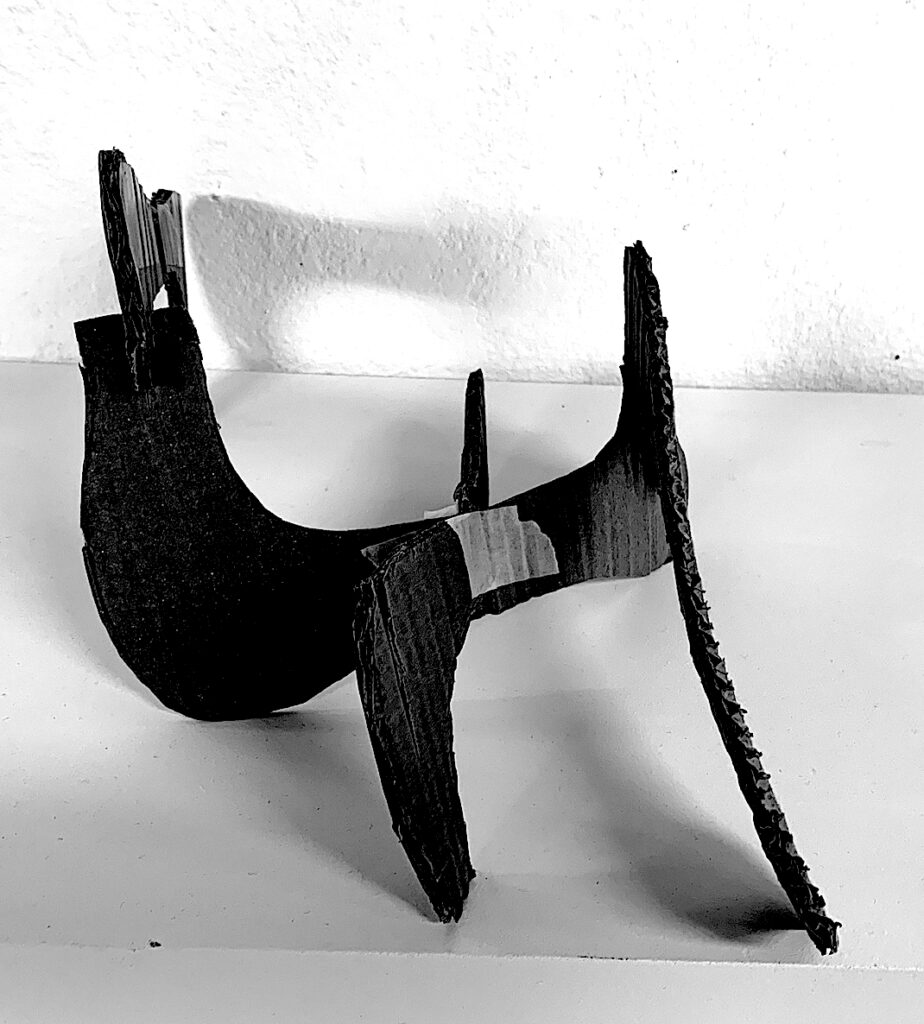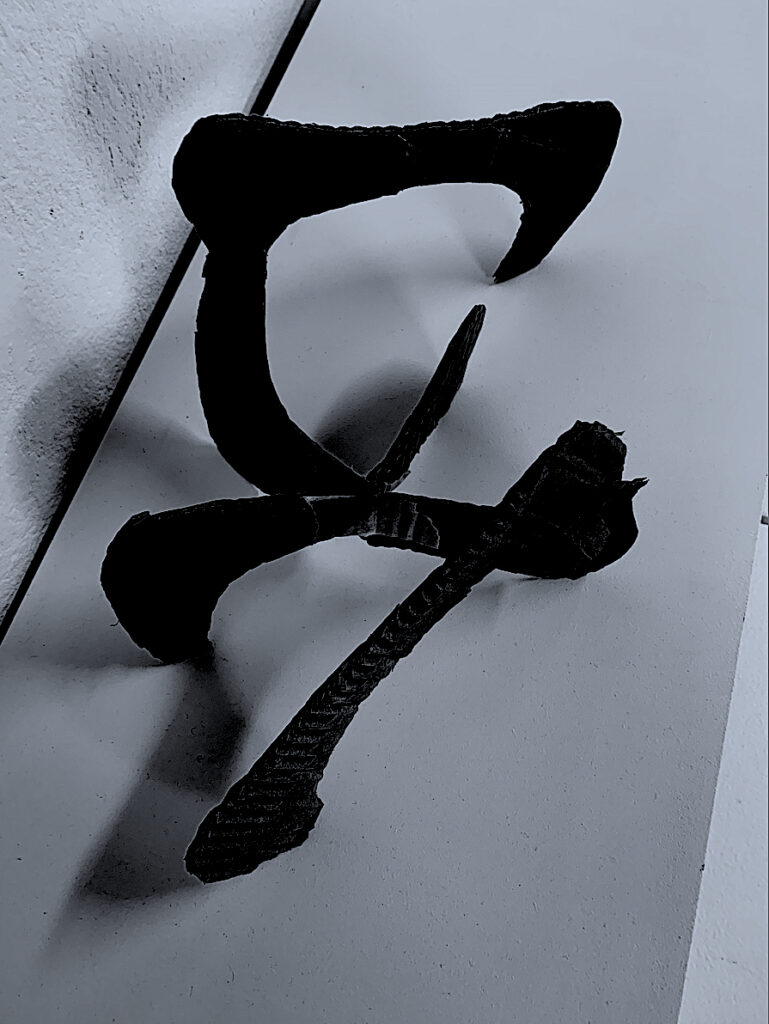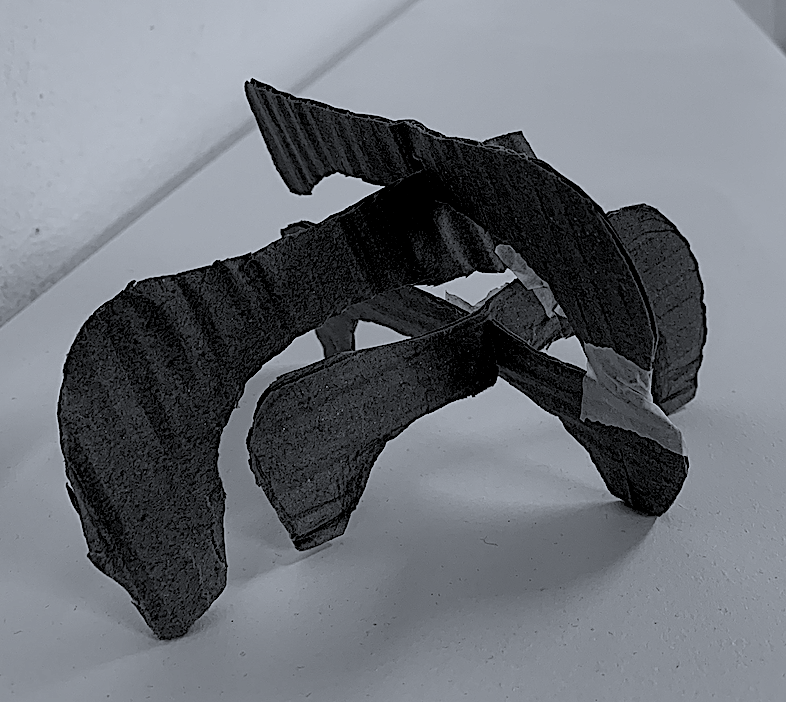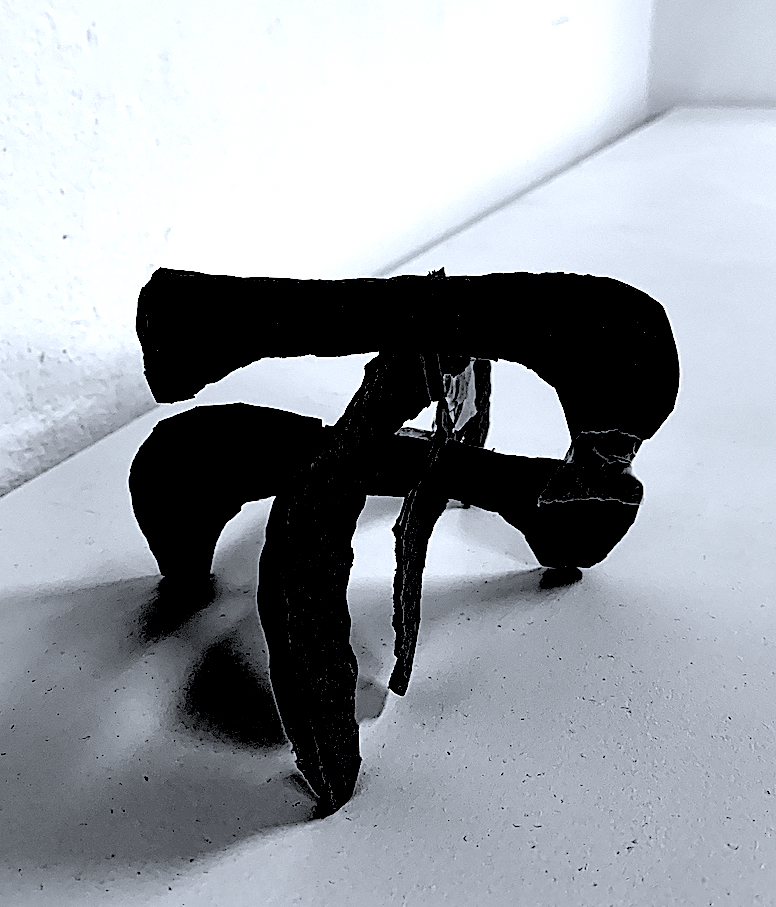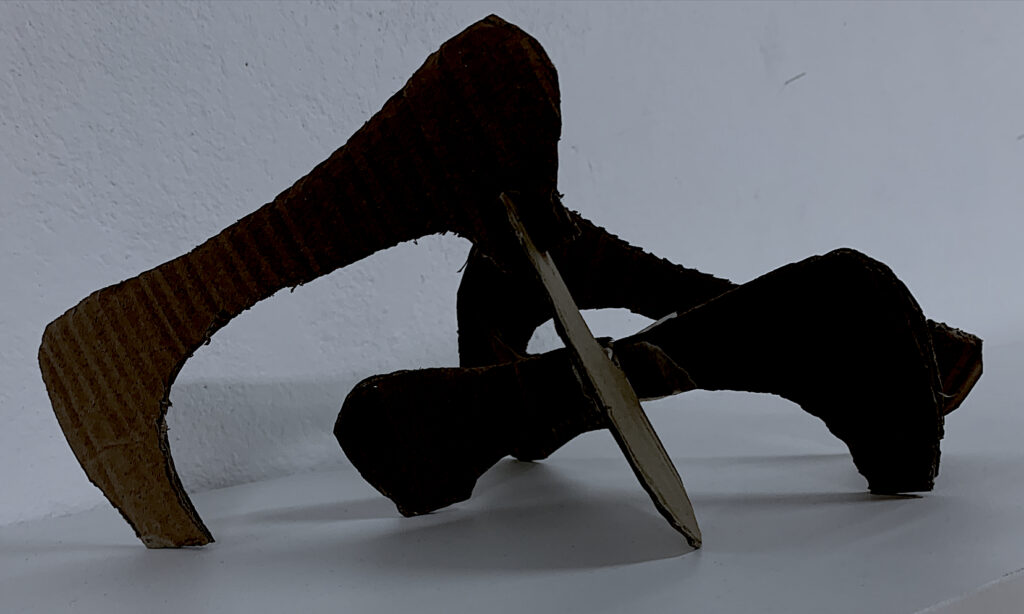‘BY IMPLICATION – AFTER ATAP0’
‘LISTEN TO LEARN, PLAY AND EXPERIMENT TO LEARN‘
Week 2, 9th – 11th March, 2021 Inspirations: ‘BY IMPLICATION – AFTER ATAPO’ (Line, Planes, Space, and Implied concepts.) Brief – Explore how visual language can be used to infer concepts without being representational by making drawings-in-space using planar and linear elements.
SPATIAL SKETCHES ‘TAKE A WEIGHT OFF YOUR MIND’ At the beginning of the lesson, I started to draw 3-dimensional ideas (i.e. a group of tall to small columns, nudged up together in a circular design like a spiral staircase). But, then realised, that I may still be making graphite marks by the end of the day. It was best to just experiment with the materials, and touch and play. These sensory sensations suddenly provided me with ideas, and I became creative, engaged and excited!
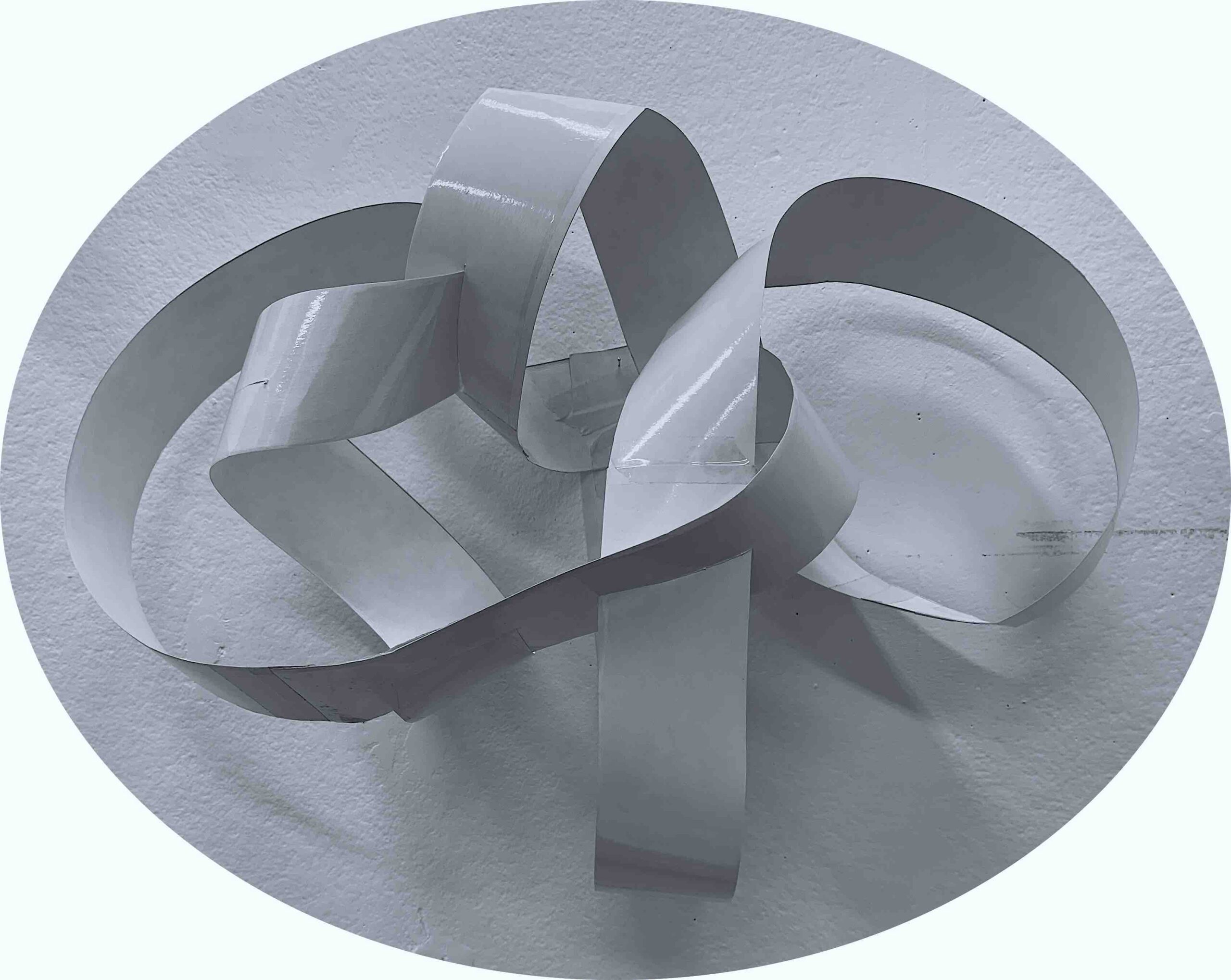
SPATIAL SKETCH: 1. ‘In and Out, Under and Over’ 09.03.21 On my first attempt at creating a spatial sketch, I thought of my drawn circular column idea, strong and thick, and heavy with mass and volume. So, I measured and cut out strips of cardboard, but then decided not to curl them inward like a column.
One surface side of the card was dull, and the other shone with a thin film of laminate, which was pleasing to the eye. Therefore, I faced this shininess outward towards the viewer, and I cut a number of lengths, and taped them together to extend them. Being very tactile, visual and kinaesthetic, the material manipulation of gently bending, curling, twisting and turning, and sticking together was the most rewarding part of the process. Beauty, to me, is an elegant object, like a ribbon river with winding veins seen from above like a bird’s eye view. So, I tried to create balance in the sculpture by pulling it about, after viewing it from different angles.
Next, I cut slices within some lengths, and pushed parts through, weaving under and over, and in and out. I could see this sculpture becoming an ovoid of snakes, with certain body parts causing curved tensions because once woven through slots, they are taped stuck.
Contrast is important to me and my work. I made the positive linear cardboard shapes invade the negative empty spaces, trying to make the air shapes to be just as important as the cardboard planes.
I realised that my first spatial sketch could be greatly improved, such as enlarging, repeating the pattern, or adding a plinth, or turning the snakes into neon lights, exploding with bright colour! Another extension to the concept could be to add an inner entanglement to fit inside, it could even hang, or kinaesthetically float and move. Yet, I stopped. It was okay for my first attempt. It had evolved to become a light weight object with titled linear planes criss-crossing through air-filled shapes and spaces.

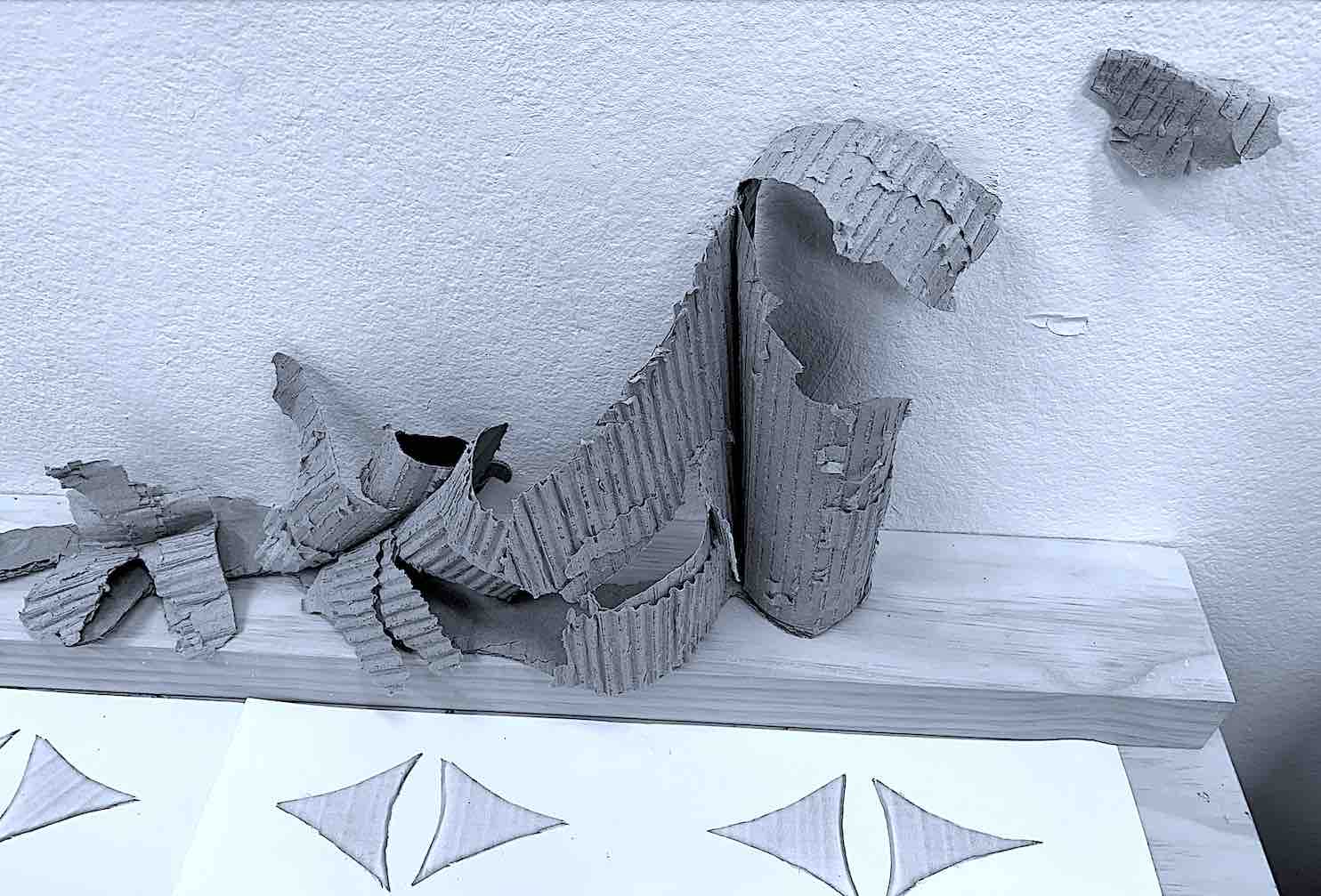
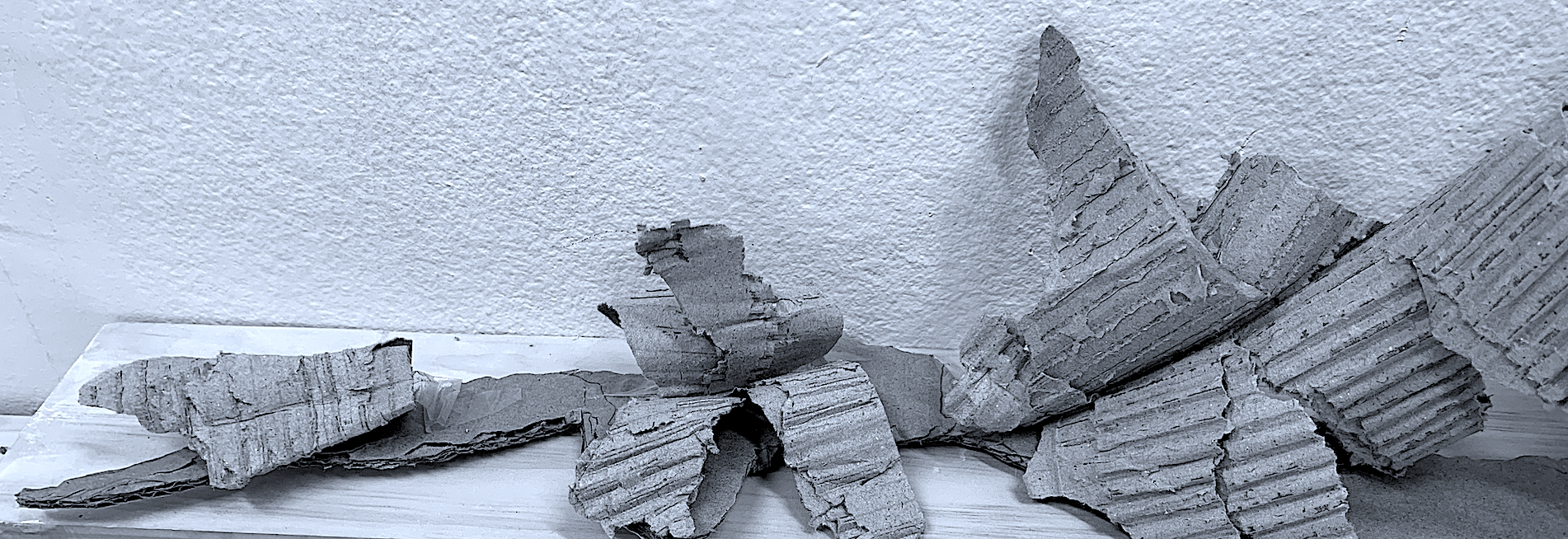
SPATIAL SKETCH: Second attempt: 2. ‘Growth Opening and Closing’ – Cardboard, 09.03.21 My second attempt was possibly my most engaged because my ideas developed easily, flowing with the touch and handling of the material.
Once again, I followed a recommendation that shaping materials by tearing and ripping was an alternative to using scissors. Tools can produce perfect linear edges, therefore ripping and tearing by hand produces the opposite effect. It was great fun, free-feeling and tactile! Having a ripped edge to my paper, and pulling back the outer layers of thick corrugated cardboard, exposing the crinkly effect beneath was liberating.
Perhaps this spatial sketch could be made into an enlarged outdoor corrugated iron or Corten steel sculpture. Instead of rips, rusty holes, moss and algae could form, and provide the organic feel I envisaged.
I am interested in constructing and deconstructing, and having gaps between forms and shapes. This is a contradictory sculpture full of opposites, exposing both growth and stunted breakage, pull and push, climb and fall. It also has a strong heavy wall mass, in comparison to the smaller lightweight ripped edges, and the separated pieces.
This spatial sketch is an organic growth on the move like a vigorous creeping vine. Flowing behind diagonally downwards and backwards is a wedding dress train. It grew out of the first tall, wall-like structure (the highest part, at the front), then a part broke off and climbed onto the wall, thus extending the sculpture’s form.
My second attempt at a sculpture sketch is an improvement. Perhaps clay or wax could be the material to use to make this sculpture, but I can also visualise it as a very large Corten steel, or corrugated iron work.
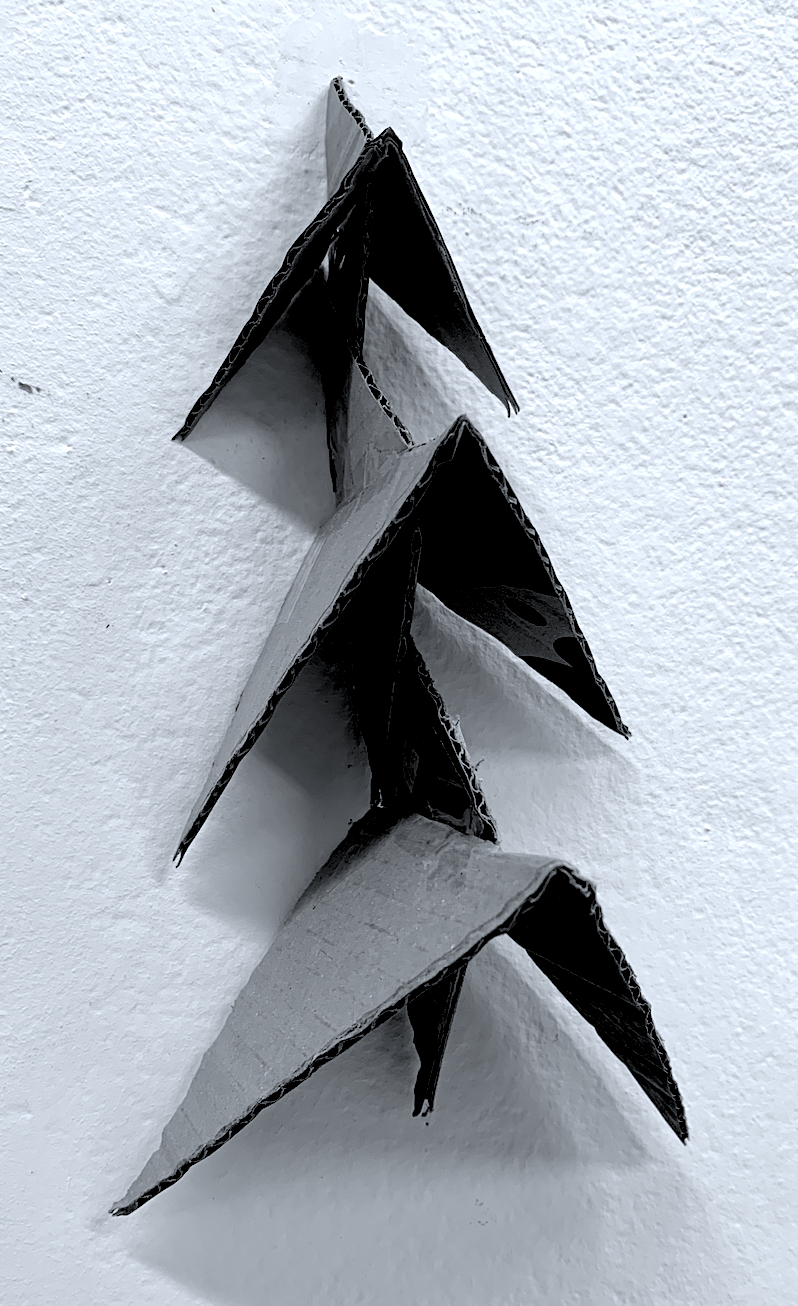
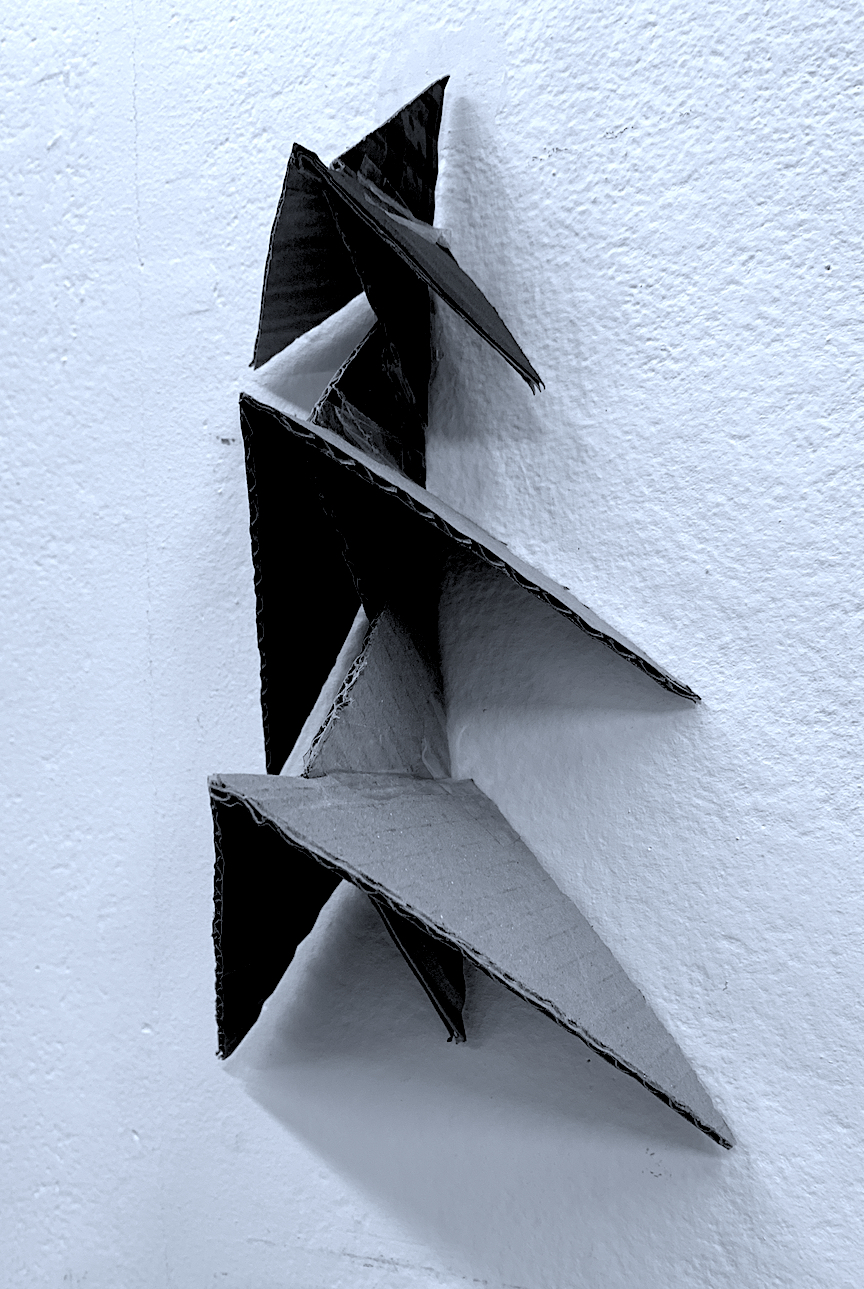
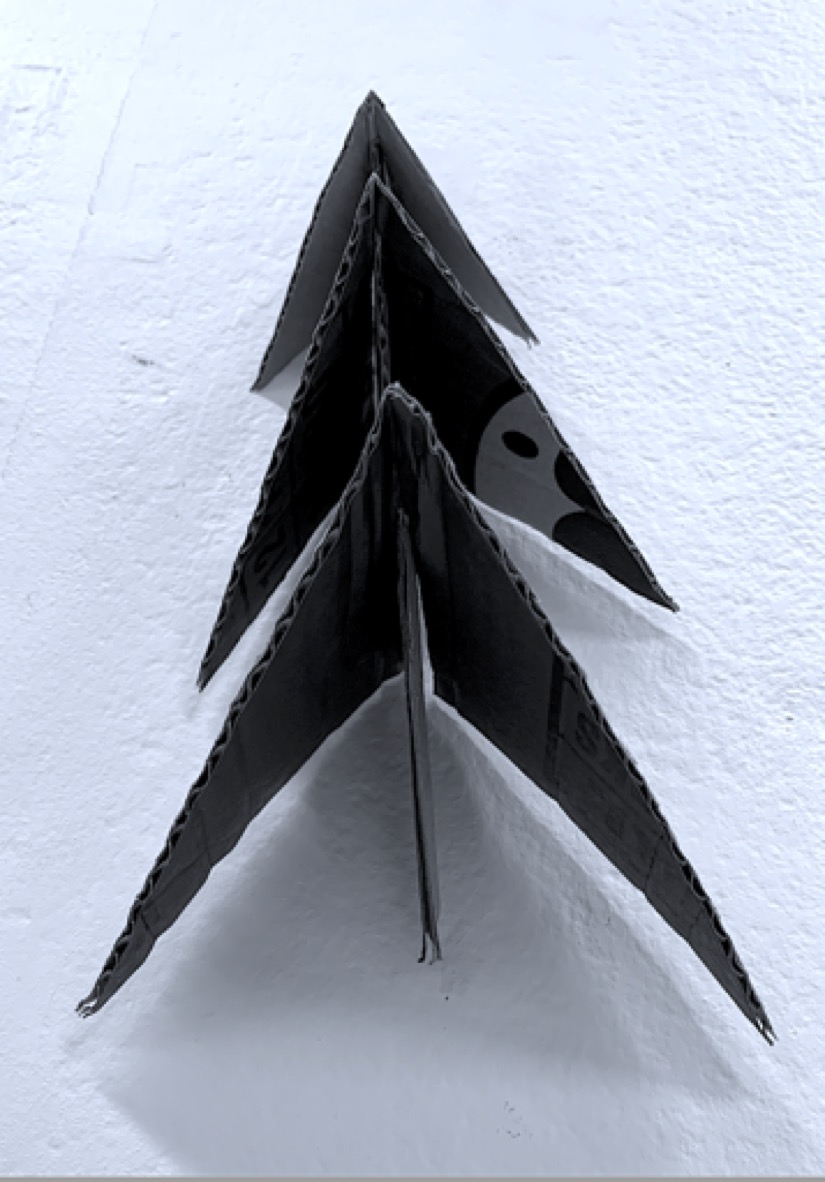
SPATIAL SKETCH: Third attempt: 3. ‘Follow the Leader Hovers’ – Cardboard, 09.03.21. My third attempt at a spatial sketch displays a collaboration of three straight arrow-type forms, like a family.
I thought about its size and weight, and wondered whether recreating it by carving into such hard materials as clay or wax, stone or bronze would give a heaviness to it. I am attracted to both light and heavy masses. I think small works can very powerful, but larger forms from artists such as: Henry Moore, Tony Cragg, Andy Goldsworthy, Paul Dibble, Chris Booth, Terry Stringer, David McCracken and Brett Graham appeal to me because of their size impact.
There is a light quality to this spatial sketch, perhaps it is the thin cardboard or the pointy triangular wings half-opened, or the way it is placed up on the wall… hovering like a bird or plane.
I have tried to create a sculpture that represents relationships by connecting the body sizes: (big, medium and small), and linking the forms together in a line behind each other, like the game of ‘Follow the Leader’.
After creating the repetitive formation and shape pattern three times, I stopped. Even though I had extension ideas, I realised I had produced the quickest spatial sketch so far. My efficiency seems to be slightly improving with practice.
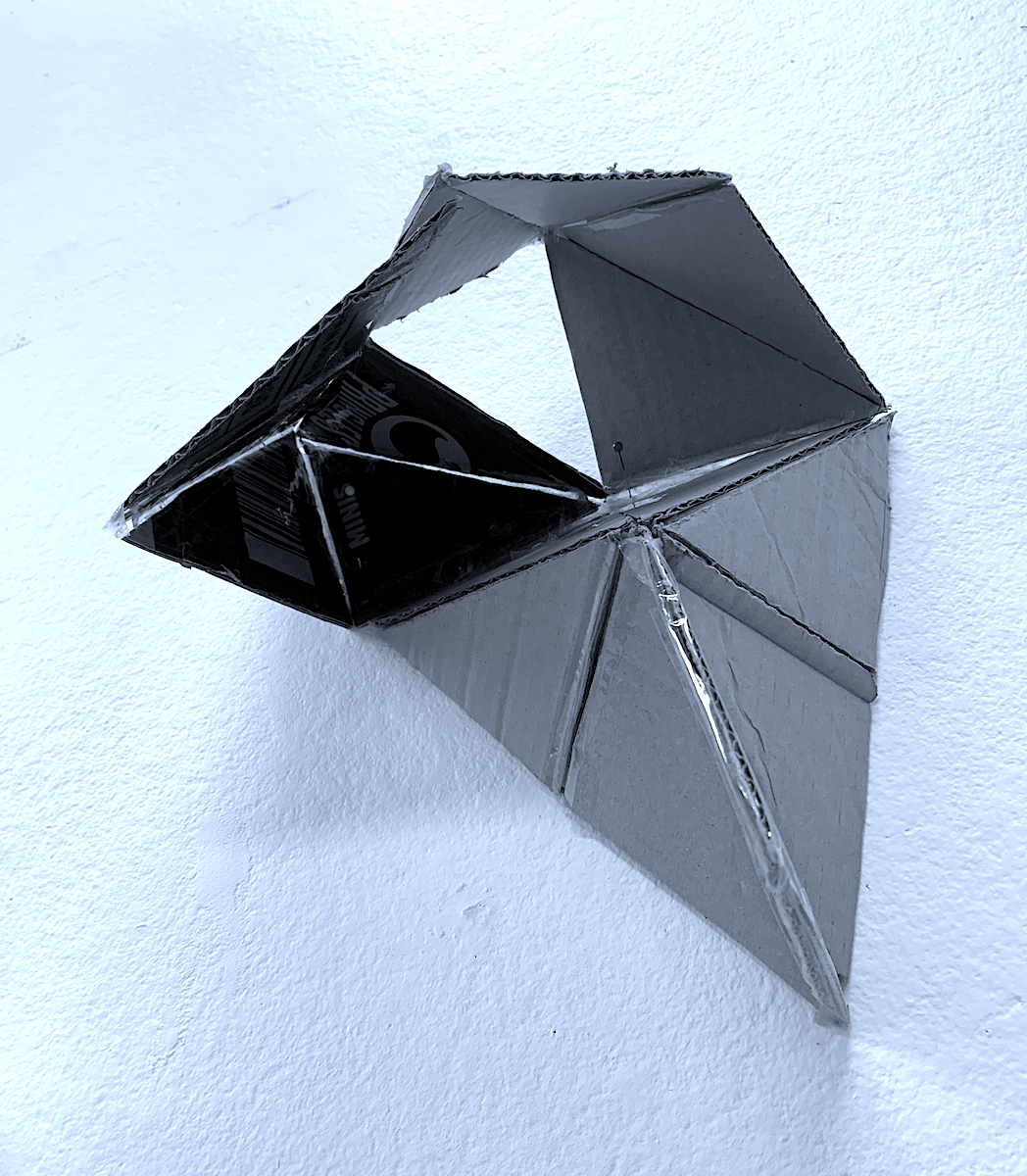
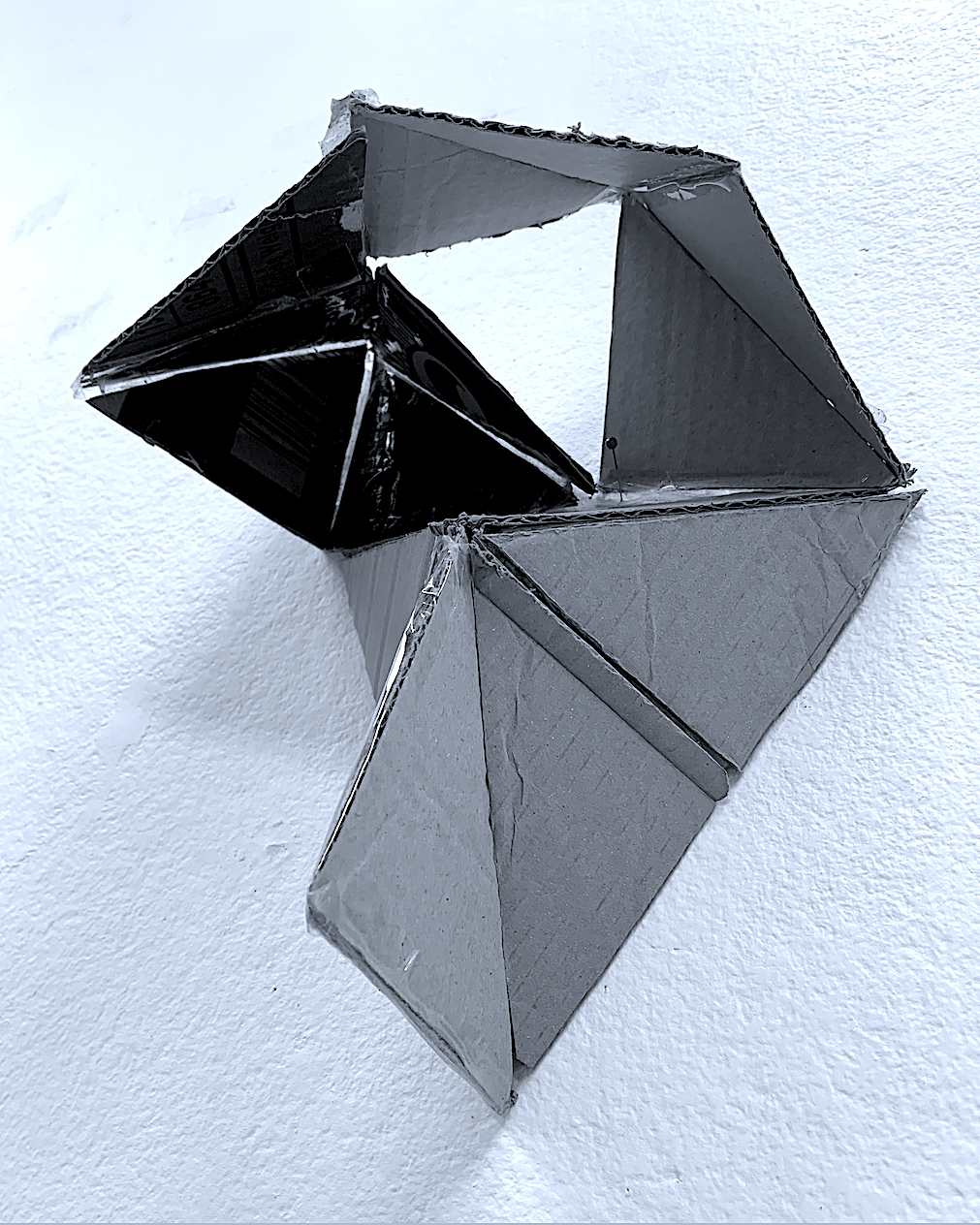
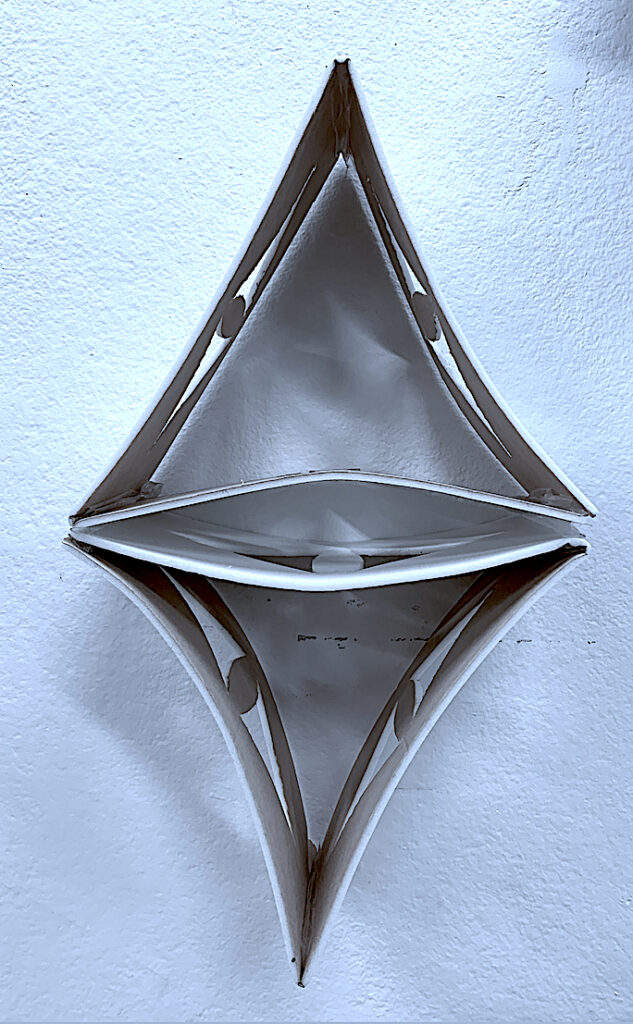
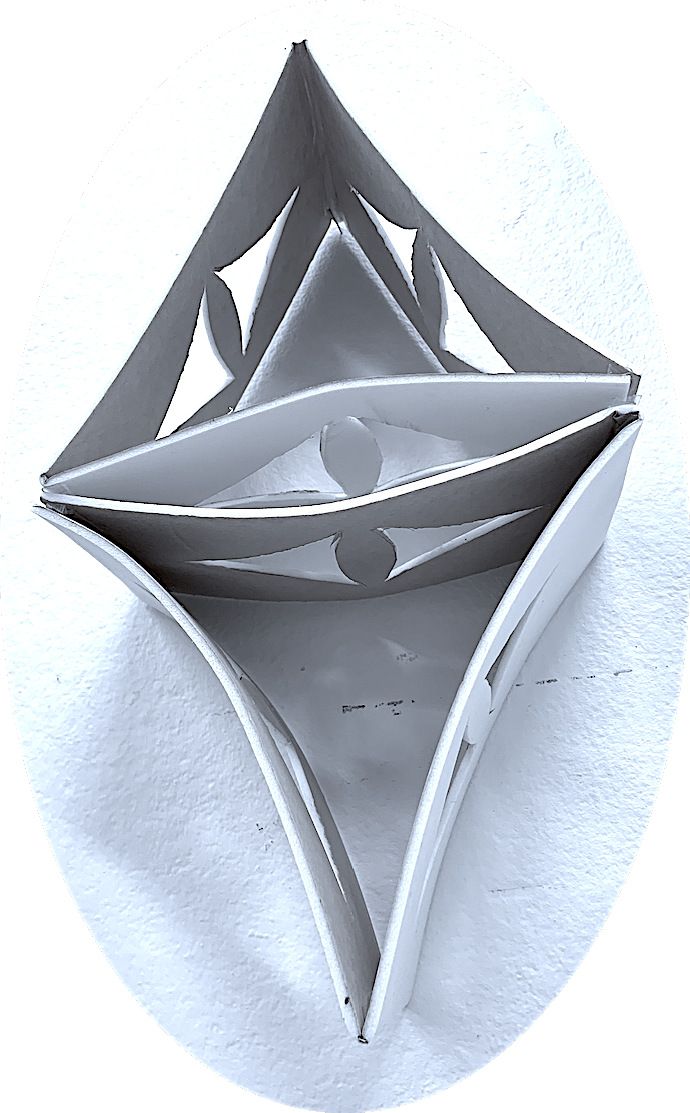
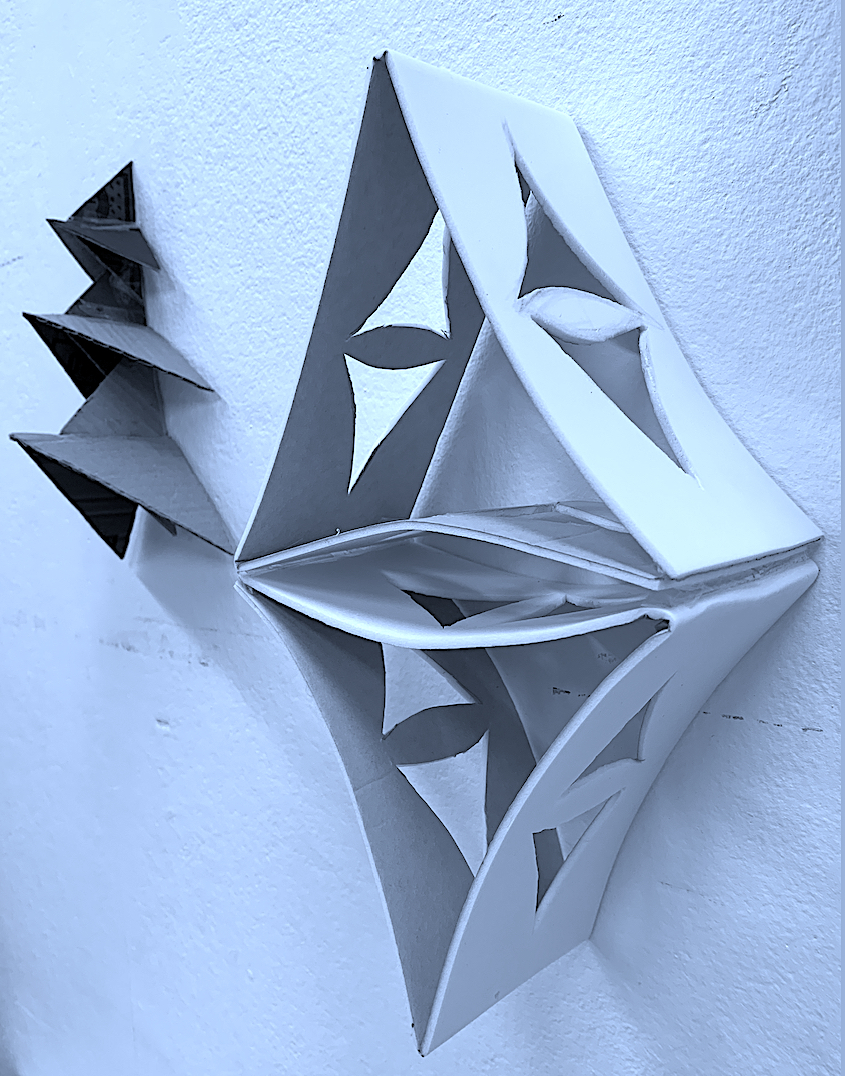
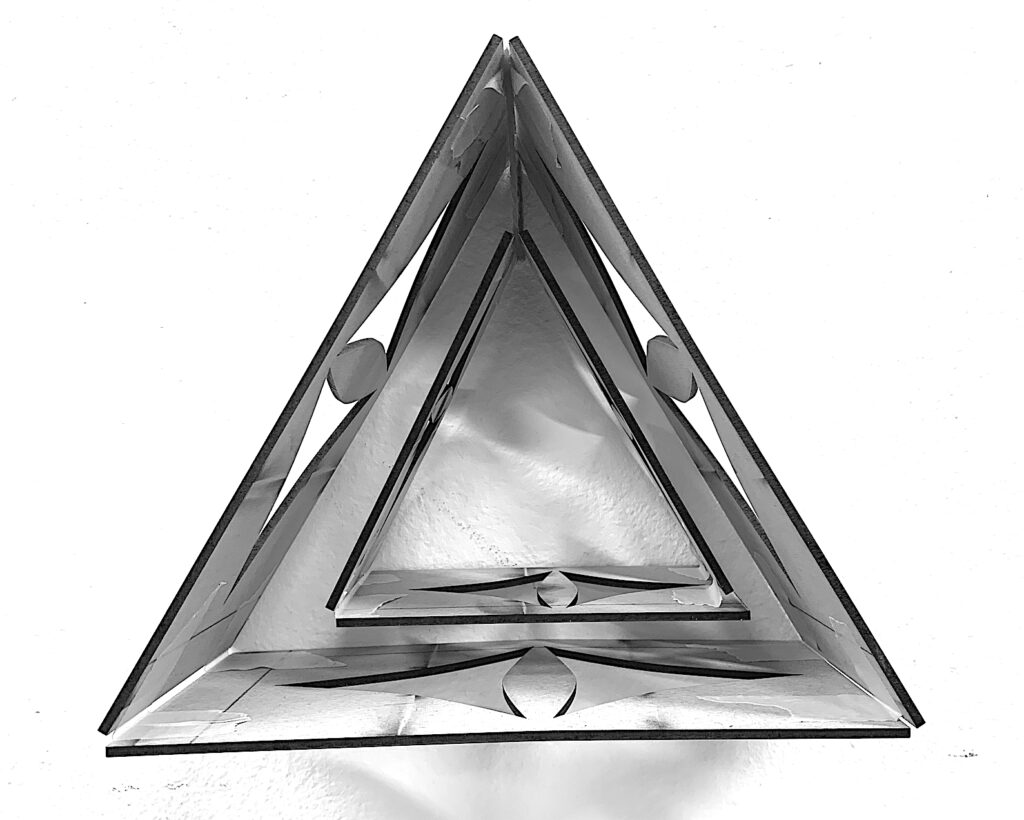
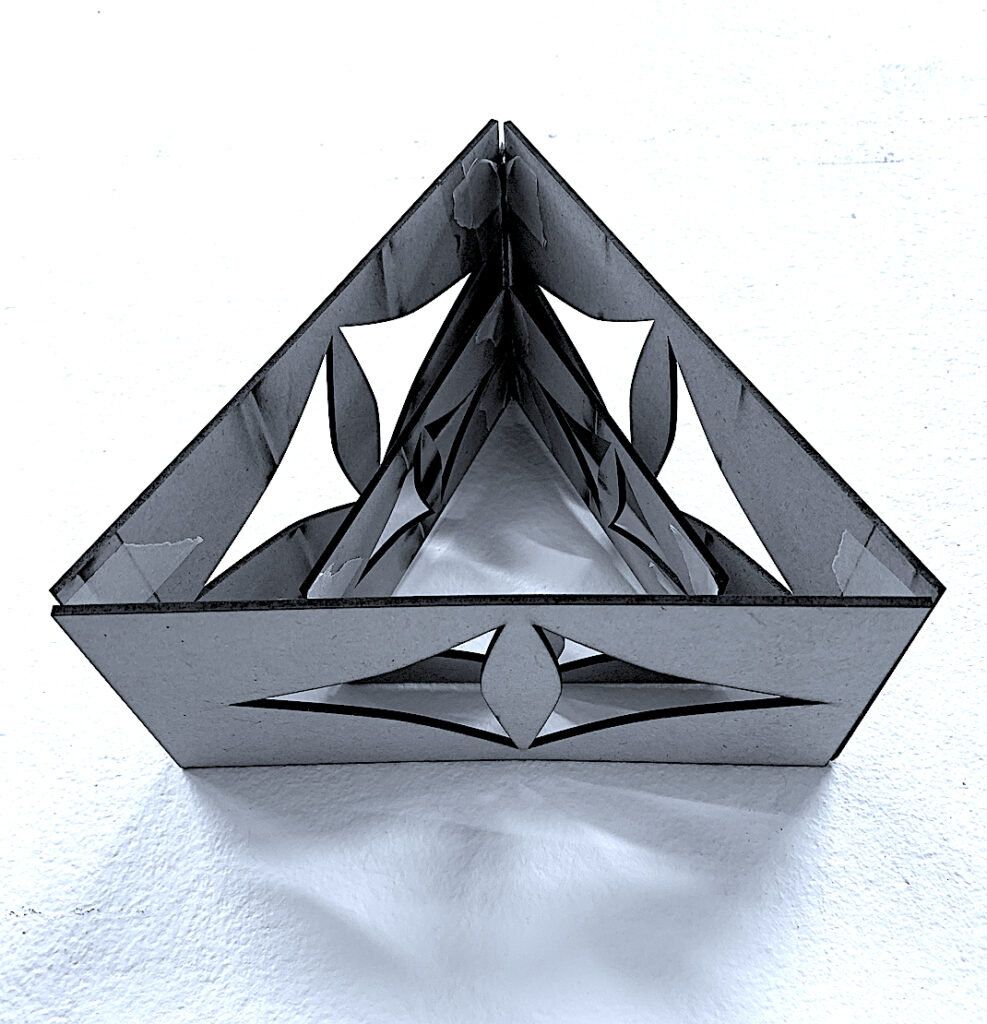
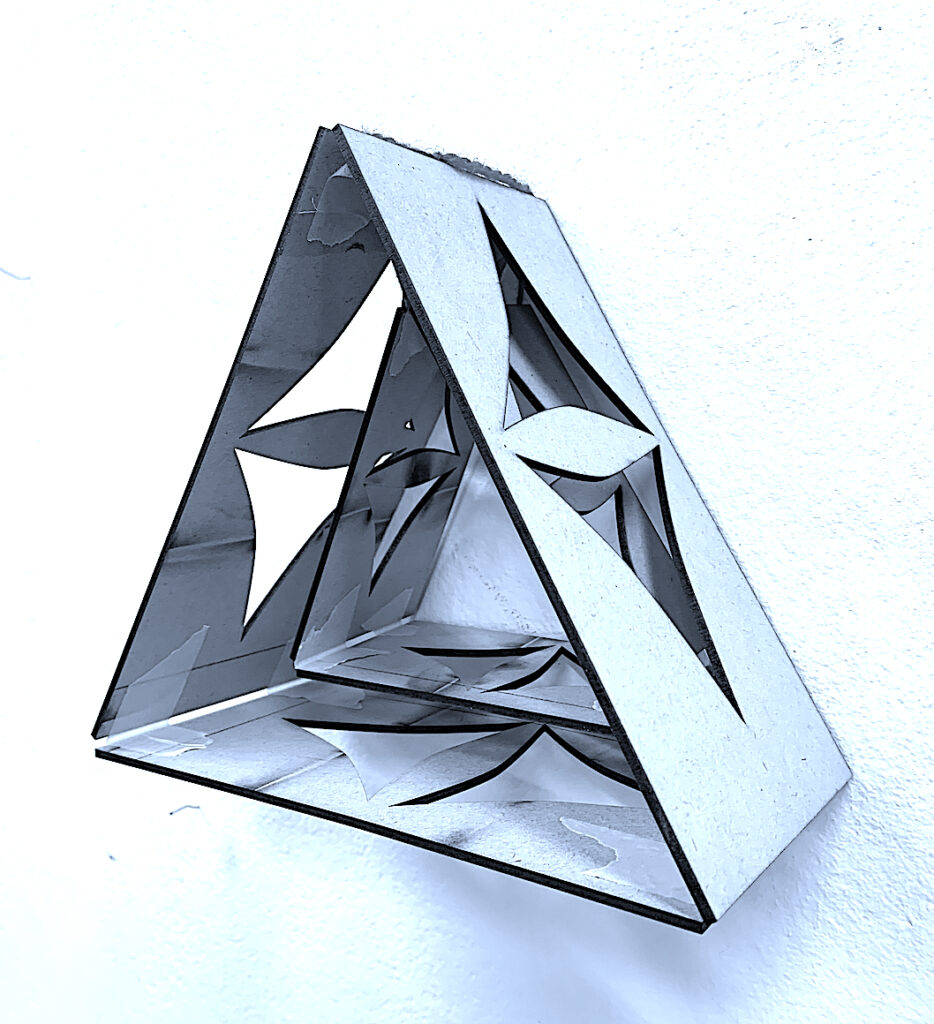
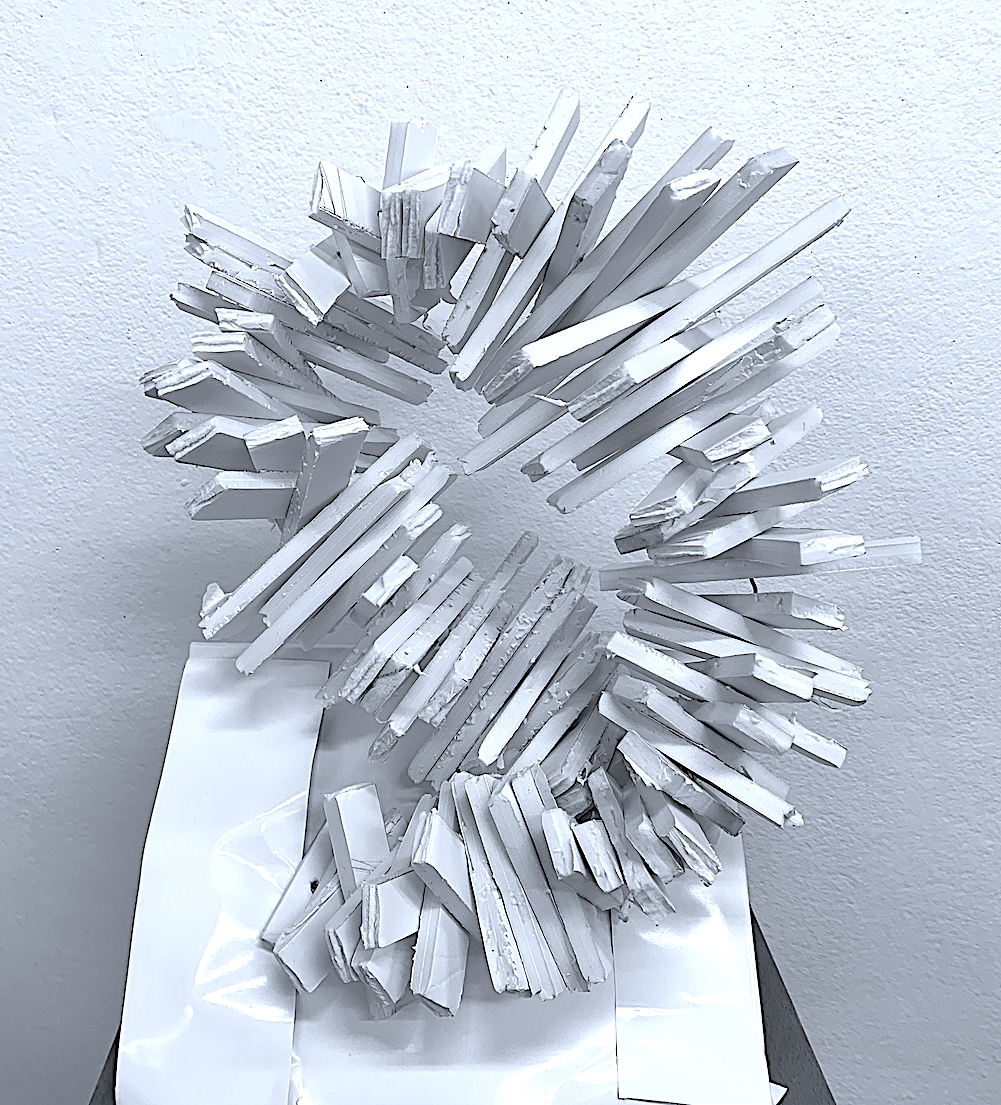
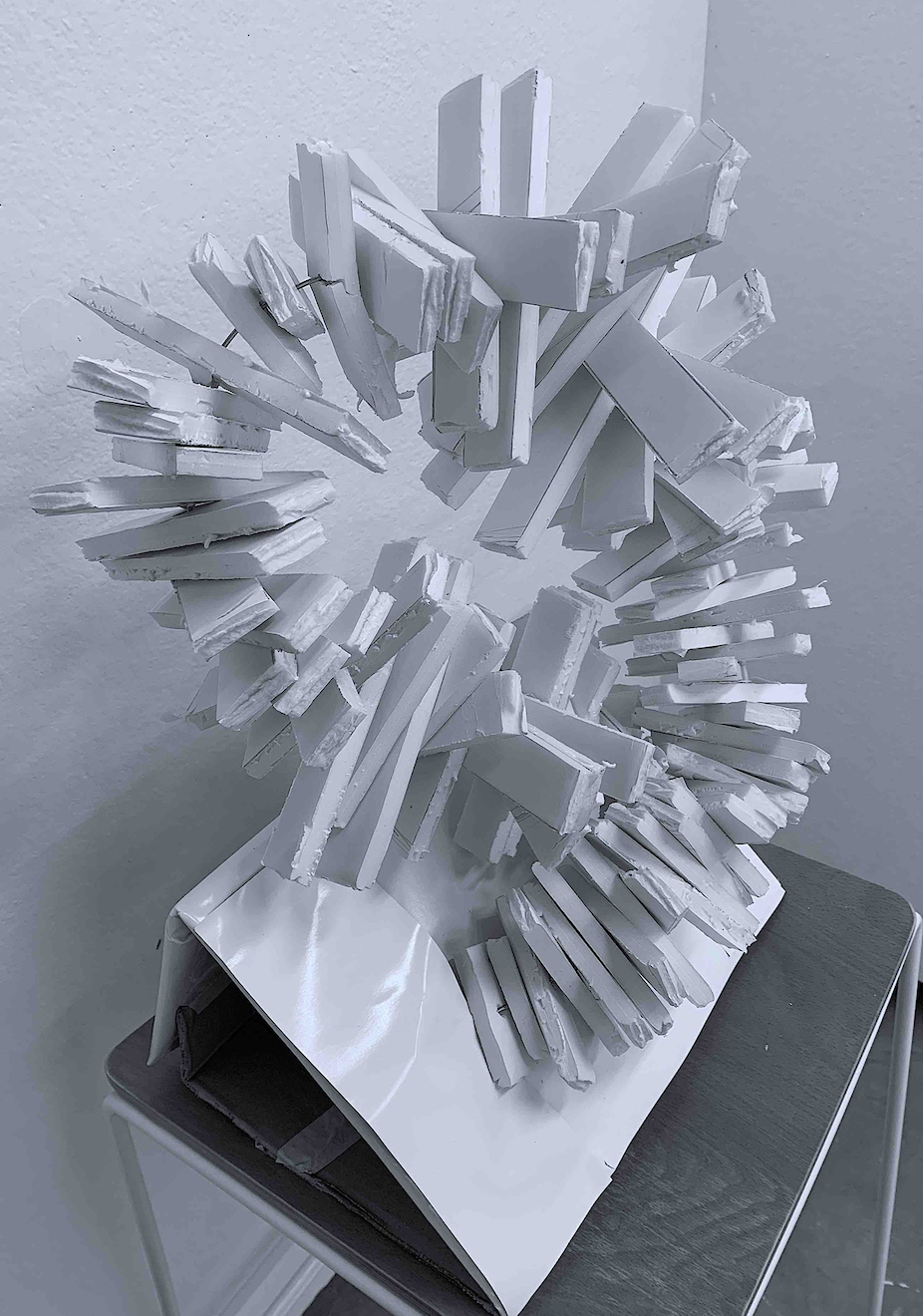
SPATIAL SKETCH: Seventh attempt: 7. ‘Spiky Growth’, Foam Card, 11.03.21 I am interested in geology, and the planet Earth’s natural flora, fauna, mineral and rock formations.
I like layers. Rearranging, decorating, plus grouping sets of objects together is an enjoyable way to make new layers. Layers can be textured or coloured, and show the weight, volume and mass of an object. I particularly like the layered heaviness, colour and texture of the Punakāiki pancake rock formations of the South Island’s West coast.
This spatial sketch evolved from thinking about plant and mineral matter that grows, and displays layers such as coloured sands, soil deposits, or the inner rings of a tree. Nature’s layered patterns and formations can change quickly or slowly, depending on the natural cycles of climatic and ocean current conditions. To me, this work represents the layered growth of rock and mineral deposits built-up over time, still growing very slowing, twisting towards the light.
My sculpture has developed into a curving, slightly twisted mass that feels light in white. As I like contrast, perhaps I could further change or extend the colouring to give a light/dark effect, or make two, one dark, one light. If I create these shapes and forms in a darker shade the sculpture may take on a heavier feeling, and the mass may be silhouetted. I quite like the feeling that my spatial sketch’s light, white look produces.
The next step could include deconstruction of the base, as this exercise has made me think about the destructive elements that cause erosion or eruptions. I need to rework and add a more simplified base structure, as I dislike what I have done.
Overall, I like my twisted, shiny white rock crystals; oblong, uneven layers, that can be rearranged and shifted in and out. Perhaps this spatial sketch has potential to expand, and provide me with an opportunity to understand sculpture more.
